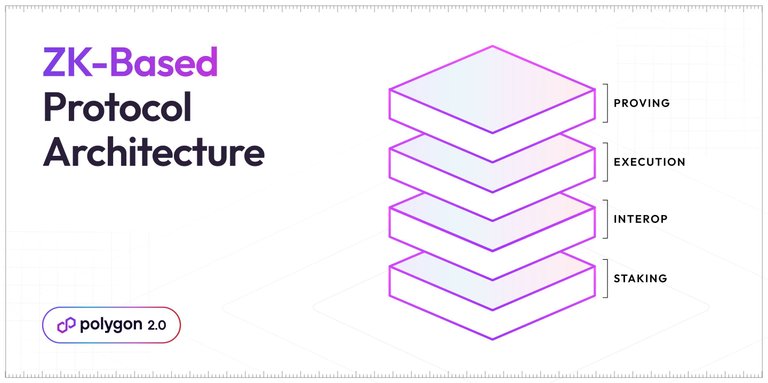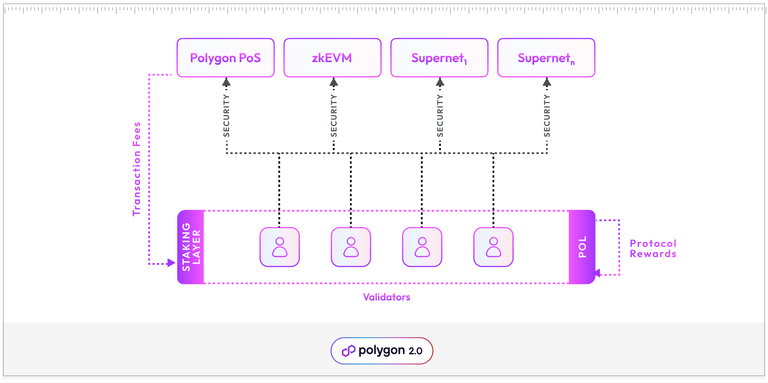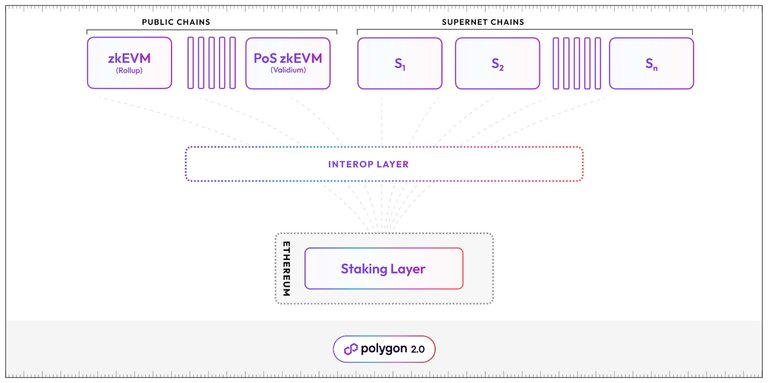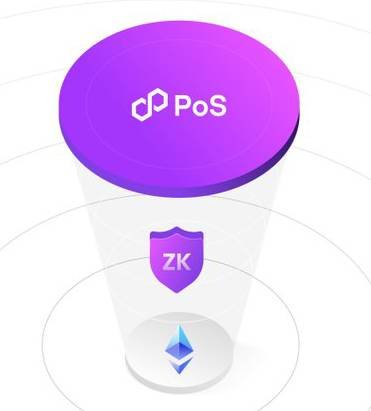Now, that we understand, the vision of Polygon team behind Polygon 2.0, let’s understand the infrastructure behind Polygon 2.0; i.e, Polygon 2.0 tech stack that would provide Polygon the capabilities of unlimited scalability, unified liquidity besides many more other capacities such as excellent cross-chain interoperability and composability.
Here I refer to interoperability between external Blockchains - Polygon and Ethereum. On Polygon 2.0, it would be possible to perform native token transfers & swaps between the Ethereum and Polygon chains instantly without requiring to trust 3rd party providers.
Those requiring to understand the vision of Polygon 2.0, should read my previous articles which inadeptly explains all that –
Polygon 2.0 all set to make Web3 infinitely scalable like the internet!!
Polygon 2.0 is coming up to scale Ethereum infinitely!! Wow!!!
Polygon 2.0's Architecture
Polygon 2.0’s infrastructure design comprises of a set of protocol layers each performing a particular sub-process for the smooth functioning of the Polygon 2.0 Blockchain Network.
These protocol layers are the architectural framework of Polygon 2.0 that function together.
Polygon 2.0 Architecture is powered by the operations performed or the processes adhered to by these main protocol layers of the Network –
Staking Layer, Interlope Layer, Execution Layer and Consensus Layer.
Staking Layer equips the Network’s validators to secure other individual L2 chains in the Polygon Network.
Polygon 2.0’s Staking Layer is designed to enable the entire Polygon 2.0’s ecosystem to be secured by the Network’s large decentralised common pool of validators who have to stake POL tokens to perform their validation activities.
Polygon 2.0 Network’s validators can validate any number of L2 chains of the Polygon 2.0 Network, so they can earn additional token rewards of the specific L2 chain besides earning POL token rewards and transaction fees.
The ZK-powered L2 chains of Polygon 2.0, need not worry about security so project teams can focus on building use case functionality of their dapp platform along with growing their community.
L2 chains procure “out of the box” decentralisation from Polygon 2.0 Network’s large common decentralised pool of validators.
Smart Contract components of the Staking Layer
Staking Layer will be built on the Ethereum Blockchain and would comprise of 2 Smart Contracts - the Validator Manager and the Chain Manager.
- The Validator Manager would control the operations of the common validator pool which is available to be utilized by all Polygon’s L2 chains.
This smart contract performs these functions -:
- Maintains Registry of validators
- Undertakes staking and unstaking processes initiated by validators
- Enables validators to re-stake to any number of Polygon chains
- Executes slashing operations
- Every Polygon 2 chain will have a Chain Manager Smart Contract to manage validator sets of their respective ZK–powered L2 chain.
This Smart Contract governs these processes –:
Sets the required level of decentralisation for the chain, that’s the minimum number of validators required to validate chain
Specifies additional staking requirements besides that of staking POL; (optional) staking of that particular L2 chain’s staking token
Specifies rules that govern slashing penalty
The Interop Layer powers Polygon 2.0 with seamless interoperability
Interop Layer equips the Polygon 2.0 Network with seamless interoperability both within the ecosystem and externally to Ethereum Blockchain.
Polygon 2.0 removes the complexities of communication between different L2 chains within the Network that the entire Network would feel like one single chain!!
Due to seamless interoperability within Polygon 2.0’s ecosystem, the network offers Unified liquidity, as near instant atomic cross-chain transactions take place making it possible to transfer various tokens of L2 chains within the ecosystem in a composable fashion.
Seamless interoperability between Polygon and Ethereum Networks
Interoperability with Ethereum is established via shared bridge to Ethereum. Here it would be possible for Polygon 2.0 Network’s L2 chains to receive and send native Ethereum assets having access to the Ethereum Blockchain.
There is no need for wrapping assets as native asset transfers between Polygon and Ethereum Blockchain is made feasible.
Role of Aggregator component in enabling seamless interoperability between Polygon and Ethereum chains
The Aggregator component enables cross-communication between Polygon and Ethereum chain to happen seamlessly . The Aggregator is situated between Polygon and Ethereum Blockchain.
The message ques and ZK proofs of Polygon 2.0’s L2 chains is combined into a single ZK proof by the Aggregator and submitted to the Ethereum Blockchain for its verification.
Once the ZK proof gets accepted by the Aggregator, receipt chains can confidently accept the messages knowing that ZK proofs serve as strong validity proofs guaranteeing the correctness of the processed transactions.
The Aggregator massively reduces the Ethereum gas costs of proof verification as it sends one ZK proof to Ethereum for verification which houses several ZK proofs all combined into one ZK proof.
Execution Layer facilitating the Block production and validation operations of the Network!!
Every ZK-powered L2 chain of Polygon 2.0 Network is equipped with the ability to produce blocks, that’s an ordered batch of transactions, that needs to be validated(approved) by validators to be processed and added on to the Blockchain Network. This process is managed by the Execution protocol Layer of the Network.
The smooth operations of the Execution layer are made possible due to these processes undertaken by various components of the Execution Layer -:
P2P: Validator nodes get connected with full nodes to procure Blockchain data
Consensus: Validators collectively agree on the validity of a Block and the right chain where these blocks would be attached and, in the process, secure the Network
Mempool: Users transactions are qued and collected in Mempool all ready to be picked and validated by the Network’s validators
Database: All processed data will be stored to be made available when querying Blockchain
Witness generator: Generates witness data required by ZK prover.
Proving Layer, the efficient protocol that manages the process of producing ZK proofs
Proving Layer generates proofs for all transactions processed by every ZK-powered chain in the Polygon 2.0 Network.
Proofs for both internal & external transactions are generated so they can be verified on Ethereum and approved to be added on to the Blockchain.
The mechanisms of the Proving Layer are managed by these components –:
Common prover:
This is the prover developed by Polygon ZK researchers which is proven to be very productive having high proving efficiency. This prover is an enhancement of Plonky2.
The common prover framework is capable to support arbitrary transaction types, i.e. state machine formats.
Making use of one common prover, streamlines the process of proof aggregation and verification.
(Optional) State machine constructor:
Developers can build their own State machines using State machine constructor. This State machine constructor was used by Polygon developers to build Polygon zkEVM.
State machine:
This represents the execution environment and the processed transaction format there, that needs to be proven by proofs generated by the prover.
State Machines can be built by using State machine constructor or can be custom built using Rust.
Polygon’s ZK team have already provided two State Machines representations for developers to use – zkEVM and MidenVM.
The proving protocol layer is designed to ensure that there is -:
- Efficient proof generation and verification
- Efficient proof aggregation
- Implementation of different ZK state machines;
- Safe cross-chain communication between those state machines.
Conclusion
All these protocol layers of Polygon 2.0 power the Polygon 2.0 Network with important functionalities– from providing decentralised security to the Network’s L2 chians , to seamless interoperability within the Network and with Ethereum, efficient ZK-proof generation and aggregation operations.
Polygon 2.0 will have enhanced capabilities of unified liquidity, unlimited scalability and seamless interoperability.
For further indepth understanding of the architectural framework of Polygon 2.0 Network, readers cam read this article –
Polygon 2.0: Protocol Architecture
Thank you for reading !!
Posted Using InLeo Alpha
Posted Using InLeo Alpha





Thanks for your contribution to the STEMsocial community. Feel free to join us on discord to get to know the rest of us!
Please consider delegating to the @stemsocial account (85% of the curation rewards are returned).
You may also include @stemsocial as a beneficiary of the rewards of this post to get a stronger support.